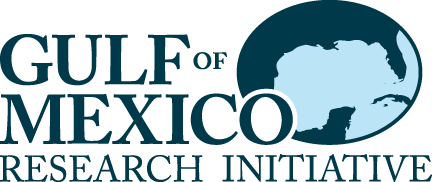Gulf Integrated Spill Response Consortium
Sponsor: Gulf of Mexico Research Initiative

Collaborators
Ocean Leadership, Inc.
Texas A&M: Dr. Piers Chapman
Funding Period
January 2014 - December 2015
Description
Accidental oil spills present a real threat to the environment, human health, and economic resources in the Gulf of Mexico. The most recent example is the catastrophic loss of the Deepwater Horizon drilling platform, when 83 days of uncontrolled well flow from the Macondo MC252 formation resulted in 4.1 to 4.4 million barrels of crude oil spilled, 2.5 x 108standard m3 of natural gas released, 430 miles of wetland coastline oiled, and $3.5 billion spent just to shut in the well. Unknown additional costs and ongoing impacts include clean up costs, losses by the fishing and tourism industry, increased data collection and forecasting costs, relocation and operation of oil skimmers and other spill response infrastructure, moratoria on new drilling and new well permitting, and ongoing environmental impact studies of the Natural Resource Damage Assessment (NRDA) and pending civil lawsuits.
In total, the financial burden to British Petroleum (BP) and its partners may exceed $100 billion. While some costs could not have been avoided once the blowout preventer failed, other costs can be attributed to both the technological inadequacy of spill response and our limited understanding of the chemical and physical behavior of deep-water blowouts: subsea containment technology did not exist beyond the blowout preventer; there was limited understanding of the behavior of the released petroleum fluid in the environment, as witnessed for example by lead responders who challenged early measurements of subsurface plume structures despite the expectation of their existence from previous laboratory and field studies (e.g. activities of Deep Spill); the spill could not be contained offshore to prevent oiling of beaches; dispersants had never been tested for subsurface application and their effectiveness was unknown and contested during the spill; etc.
In summary, the response infrastructure to predict the behavior of spilled petroleum fluids and to test the effectiveness of different mitigation strategies was either inadequate or simply unavailable during the Macondo spill; thus, there remains a critical need to create an adaptive spill response system that can observe and predict in real time the fate and transport of petroleum fluids over the wide range of scales from the wellhead to the beach and guide decisions in response and mitigation. Developing technology and knowledge for the critical feedback loops between observations, predictions and decisions is the focus of this consortium proposal.
This project was initiated to track the fate of oil droplets dispersed in the Gulf of Mexico as a result of the BP Deepwater Horizon oil spill of 2010. We will produce a high-resolution model of Gulf of Mexico circulation that can allow (1) implementation of the state-of-the-art oil spill modeling system; (2) model downscaling of Texas-Louisiana shelf circulation; (3) interaction with air-sea coupled basin-scale model. The nested model and couplings will enable the research team to better understand the transport, transformation, and fate of oil as it cross various regions in the study domain (Gulf of Mexico and beyond).
